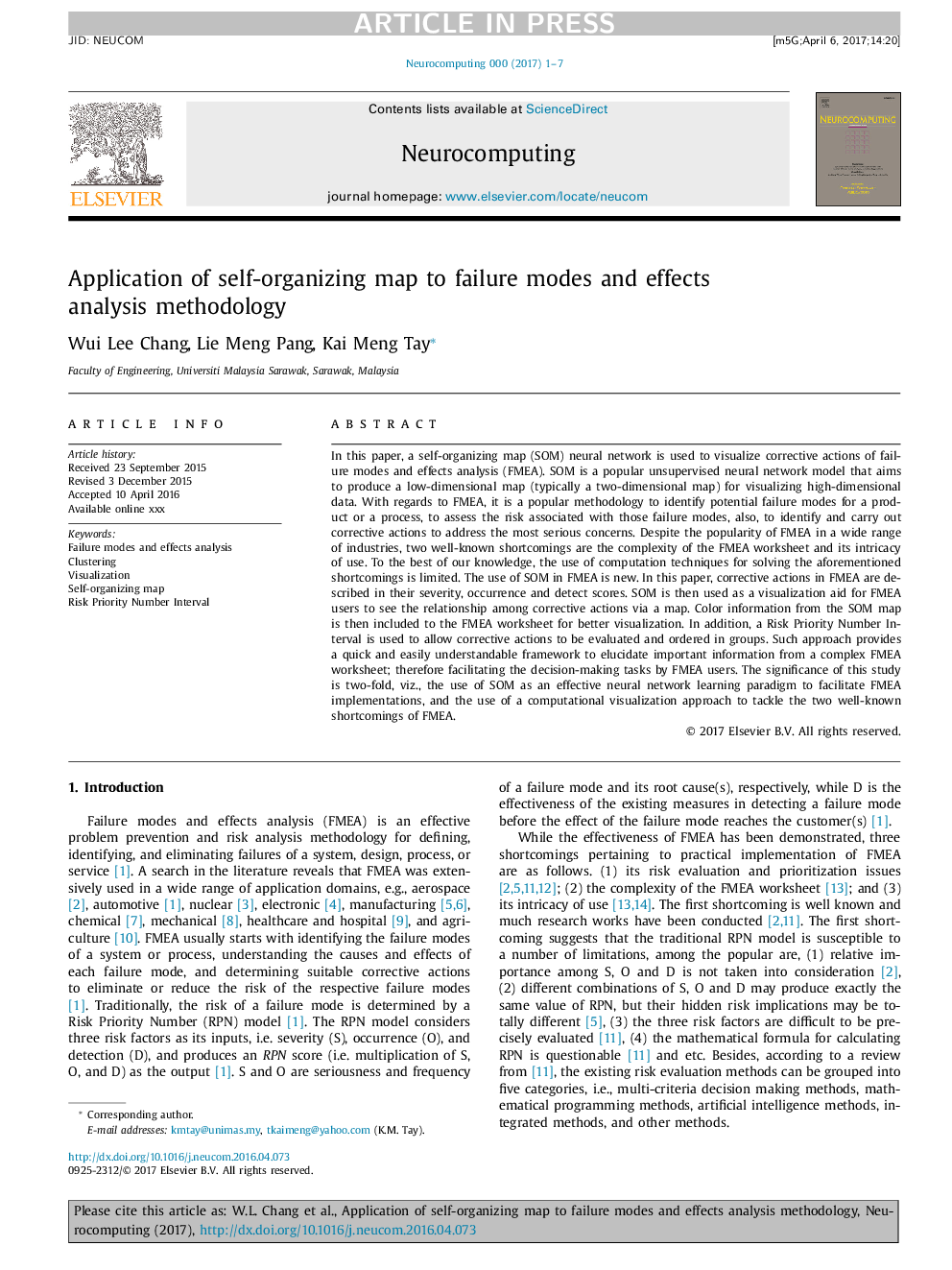| کد مقاله | کد نشریه | سال انتشار | مقاله انگلیسی | نسخه تمام متن |
|---|---|---|---|---|
| 4947484 | 1439578 | 2017 | 7 صفحه PDF | دانلود رایگان |
عنوان انگلیسی مقاله ISI
Application of self-organizing map to failure modes and effects analysis methodology
ترجمه فارسی عنوان
استفاده از نقشه خود سازمانی به حالت های شکست و روش تجزیه و تحلیل اثرات
دانلود مقاله + سفارش ترجمه
دانلود مقاله ISI انگلیسی
رایگان برای ایرانیان
کلمات کلیدی
حالت های شکست و تجزیه و تحلیل اثر. خوشه بندی تجسم، نقشه خودمراقبتی، فاصله اولویت خطر، فاصله،
موضوعات مرتبط
مهندسی و علوم پایه
مهندسی کامپیوتر
هوش مصنوعی
چکیده انگلیسی
In this paper, a self-organizing map (SOM) neural network is used to visualize corrective actions of failure modes and effects analysis (FMEA). SOM is a popular unsupervised neural network model that aims to produce a low-dimensional map (typically a two-dimensional map) for visualizing high-dimensional data. With regards to FMEA, it is a popular methodology to identify potential failure modes for a product or a process, to assess the risk associated with those failure modes, also, to identify and carry out corrective actions to address the most serious concerns. Despite the popularity of FMEA in a wide range of industries, two well-known shortcomings are the complexity of the FMEA worksheet and its intricacy of use. To the best of our knowledge, the use of computation techniques for solving the aforementioned shortcomings is limited. The use of SOM in FMEA is new. In this paper, corrective actions in FMEA are described in their severity, occurrence and detect scores. SOM is then used as a visualization aid for FMEA users to see the relationship among corrective actions via a map. Color information from the SOM map is then included to the FMEA worksheet for better visualization. In addition, a Risk Priority Number Interval is used to allow corrective actions to be evaluated and ordered in groups. Such approach provides a quick and easily understandable framework to elucidate important information from a complex FMEA worksheet; therefore facilitating the decision-making tasks by FMEA users. The significance of this study is two-fold, viz., the use of SOM as an effective neural network learning paradigm to facilitate FMEA implementations, and the use of a computational visualization approach to tackle the two well-known shortcomings of FMEA.
ناشر
Database: Elsevier - ScienceDirect (ساینس دایرکت)
Journal: Neurocomputing - Volume 249, 2 August 2017, Pages 314-320
Journal: Neurocomputing - Volume 249, 2 August 2017, Pages 314-320
نویسندگان
Wui Lee Chang, Lie Meng Pang, Kai Meng Tay,
